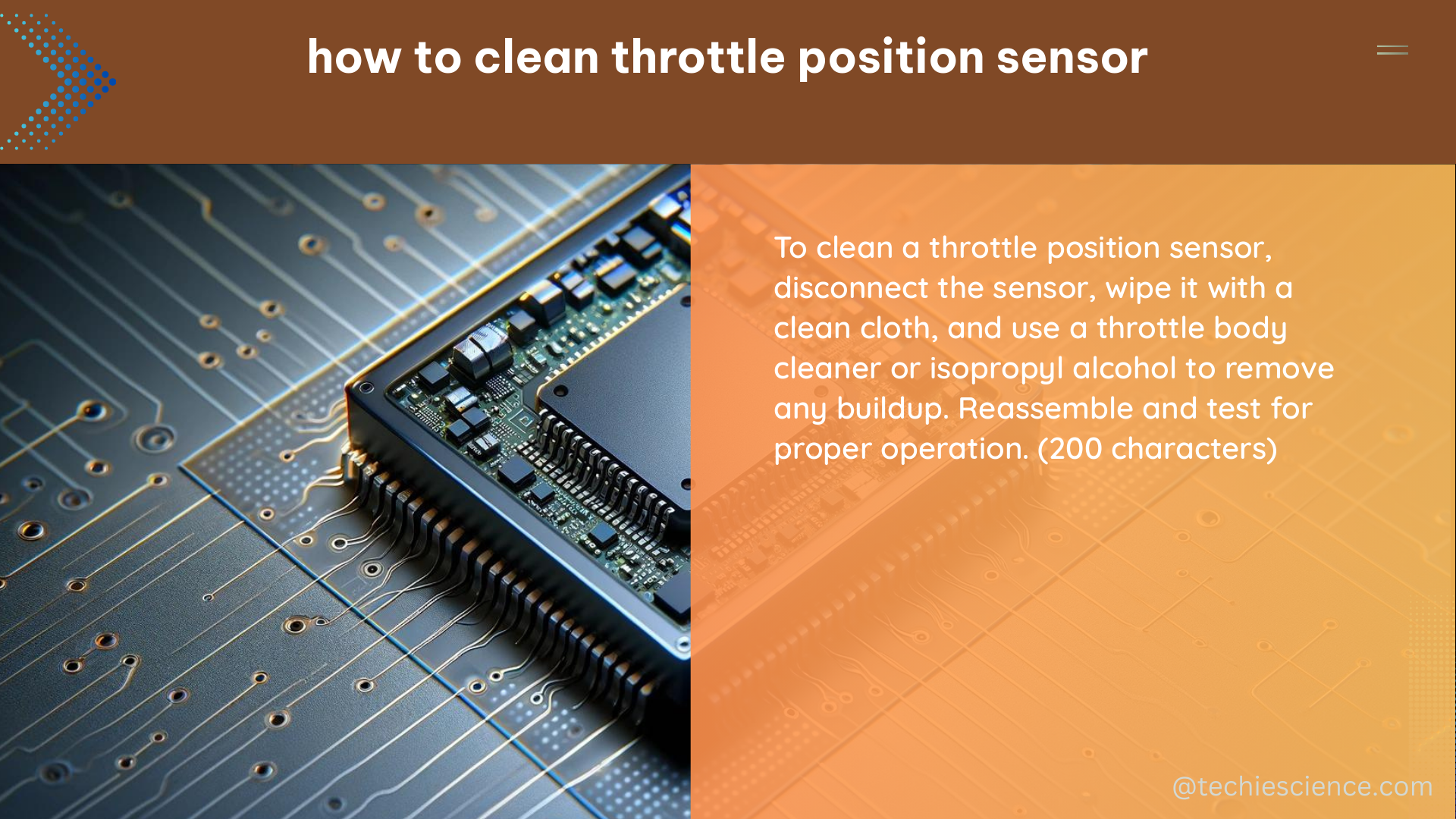The throttle position sensor (TPS) is a critical component in the engine management system of your vehicle, responsible for providing the engine control module (ECM) with information about the position of the throttle. Over time, the TPS can become dirty or contaminated, leading to inaccurate readings and potential engine performance issues. In this comprehensive guide, we’ll walk you through the step-by-step process of properly cleaning a throttle position sensor to ensure optimal engine performance.
Preparing to Clean the Throttle Position Sensor
Before you begin the cleaning process, it’s essential to take the necessary safety precautions. First, disconnect the negative battery cable to prevent any accidental electrical shorts. This step is crucial to avoid potential damage to the sensor or other electrical components in your vehicle.
Next, locate the TPS, which is typically mounted on the throttle body, which is connected to the intake manifold. The TPS is usually a three-wire sensor, with one wire for power, one for ground, and one for the signal output.
Removing the Throttle Position Sensor

To access the TPS for cleaning, you’ll need to remove it from the throttle body. Start by unscrewing the sensor from the throttle body, taking note of its orientation. This will ensure that you can reinstall the sensor in the same position, maintaining the proper alignment and calibration.
Cleaning the Throttle Position Sensor
Once the TPS is removed, it’s time to clean the sensor. Use a high-quality electrical contact cleaner and a clean, lint-free cloth to gently wipe down the sensor’s electrical contacts and the throttle shaft. Avoid using any abrasive materials or tools, as they can damage the delicate components of the TPS.
When cleaning the TPS, it’s essential to pay close attention to the following areas:
- Electrical Contacts: Ensure that all the electrical contacts are free of any dirt, grease, or corrosion. This will help maintain a proper electrical connection and ensure accurate signal output.
- Throttle Shaft: Clean the throttle shaft thoroughly, as any buildup of deposits can affect the smooth movement of the shaft and lead to inaccurate readings.
- Sensor Housing: Wipe down the entire sensor housing to remove any accumulated dirt or debris that may have entered the sensor.
After cleaning, use a clean, dry cloth to thoroughly dry the TPS before reinstallation.
Reinstalling the Throttle Position Sensor
With the TPS now clean, it’s time to reinstall it in the throttle body. Carefully align the sensor in the same position as it was removed, ensuring that it is securely tightened. This step is crucial to maintain the proper calibration and ensure accurate readings from the TPS.
Reconnecting the Battery and Testing the TPS
Once the TPS is reinstalled, reconnect the negative battery cable and start the engine. Observe the engine’s performance and check for any diagnostic trouble codes related to the TPS. If the engine is running smoothly and no codes are present, the TPS cleaning was successful.
If you encounter any issues or the engine is not running as expected, you may need to perform further troubleshooting or consider replacing the TPS.
Technical Specifications of the Throttle Position Sensor
The throttle position sensor is a type of position sensor that measures the position of the throttle valve in an internal combustion engine. It is typically a three-wire potentiometer, with one wire for power, one wire for ground, and one wire for the signal output.
The signal output from the TPS is a variable voltage that corresponds to the position of the throttle valve. This information is used by the engine control module (ECM) to control fuel injection and ignition timing, ensuring optimal engine performance and efficiency.
The typical voltage range for a TPS can vary depending on the specific vehicle and sensor, but it is generally between 0.5 and 4.5 volts. The sensor’s resistance can also vary, with a typical range of 0 to 5 kΩ.
It’s important to note that the TPS must be properly calibrated to ensure accurate readings. This can be done using a diagnostic tool or by following the manufacturer’s recommended procedures.
Conclusion
Cleaning a throttle position sensor is a straightforward task that can help maintain the overall health and performance of your vehicle’s engine. By following the steps outlined in this comprehensive guide, you can effectively clean the TPS and ensure that it is providing accurate readings to the ECM. Remember to always prioritize safety and use the appropriate tools and materials to avoid any damage to the sensor or other components.
References:
- How to Clean a Throttle Position Sensor
- Cleaning a Throttle Position Sensor
- Throttle Position Sensor Cleaning and Testing

The lambdageeks.com Core SME Team is a group of experienced subject matter experts from diverse scientific and technical fields including Physics, Chemistry, Technology,Electronics & Electrical Engineering, Automotive, Mechanical Engineering. Our team collaborates to create high-quality, well-researched articles on a wide range of science and technology topics for the lambdageeks.com website.
All Our Senior SME are having more than 7 Years of experience in the respective fields . They are either Working Industry Professionals or assocaited With different Universities. Refer Our Authors Page to get to know About our Core SMEs.